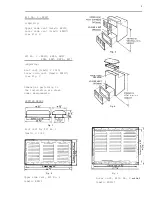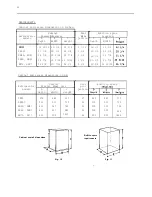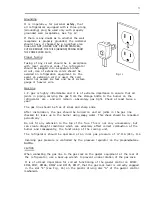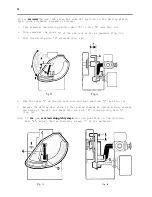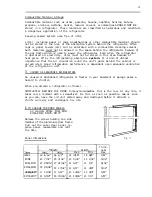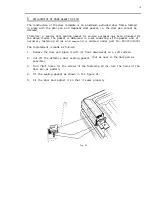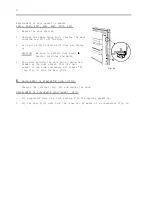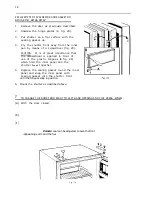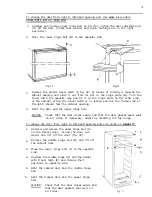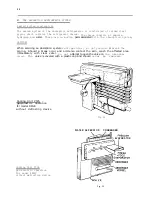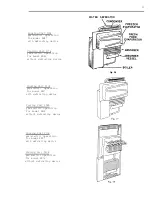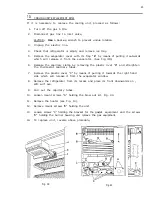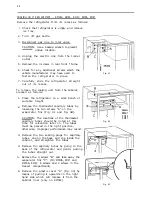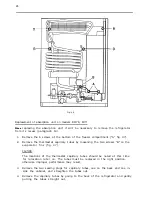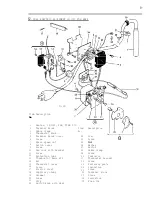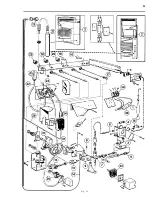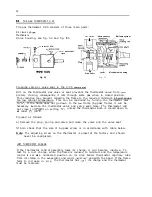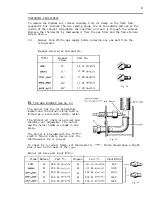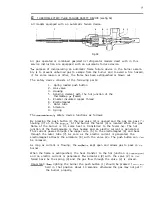
22
9.
OPERATION ANALYSIS FOR COOLING UNIT
It is obviously important that all external factors affecting the unit should be
checked properly before
a
unit is condemned as faulty and that emphasis has been
placed upon the necessity for correct installation, upright refrigerator,
c o r r e c t
heat input, baffle position, etc. Check the size and the wattage of the electric
heater and make sure that the heater element is inserted to its full length in its
pocket. If the electric heater is only partly inserted, the heat distribution will
be incorrect , causing an excessive vaporizing of the ammonia within the boiler when
operating on electricity, The same symptom can show up with too much or too little
heat input either on electric or on gas operation and also if the refrigerator had
been operating in an off-level position or with inadequate ventilation.
If an excessive vaporizing of the ammonia within the boiler occurs due to the
reasons above, the liquid mixture in the boiler becomes very weak and the pump will
cease to operate, which means that the circulation of liquid stops with the result
that the evaporator inside the cabinet ceases to produce cooling,
Such a blockage of the unit in the liquid circuit is most usually made evident by
signs of overheating on the vapour pipe leading from the boiler to the condenser,
the paint on this pipe being blistered and the metal becoming discoloured.
To remedy this fault it is recommended to remove the unit or refrigerator complete
whenever possible and to allow sufficient
time
to cool down the unit. Turn the unit
or
refrigerator upside down several times, so that the liquid in the absorber vessel
can be mixed with the liquid in the boiler. This procedure will restore the liquid
balance to the unit.
The temperatures on various parts of a unit vary continuously
when it
is operating
on thermostatic control and it is impossible
to
base a judgment on the symptoms
given unless the refrigerator has been operating continuously on fully correct heat
input for at least 5 hours, and preferably 12 hours, prior to examination. In many
cases this can be arranged by a telephone call to the customer, asking him to switch
the thermostat to “MAX” on the day before the inspection call, If after 12 hours’
operation on "MAX” the performance is satisfactory, the unit is not at fault unless
the complaint is one of varying or intermittent performance, In this connection the
room temperature at the time of the complaint must be considered, as a unit which is
satisfactory at an ambient temperature of
may not be satisfactory at
In cases where satisfactory performance is obtained on
but not on other
settings, the thermostat is to be suspected,
When a normal unit is working on
the absorber coil will be warmer at the
bottom
than it is at the top, The absorber vessel will be warmer, The vapour cooling
pipe from the boiler to the condenser will be warm, bearably to the hand, at the
bend where it joins the condenser, with a gradual rise in temperature towards the
boiler end,
Unit filling valve
The needle valve used for admitting the filling charge to a cooling unit is fitted
to the unit’s absorber vessel and is covered by an aluminium or plastic cap. It is
strictly applied provision of the warranty extended on the unit to the customer,
that any interference with the filling valve will automatically void the warranty.
Unsatisfactory unit performance due to an ammonia leak can be determined in the
c a s e
of a visible leak by traces of a yellow deposit at the point where the ammonia is
escaping, If there is a leak on the evaporator inside the cabinet, a smell of
ammonia may be noticeable,


